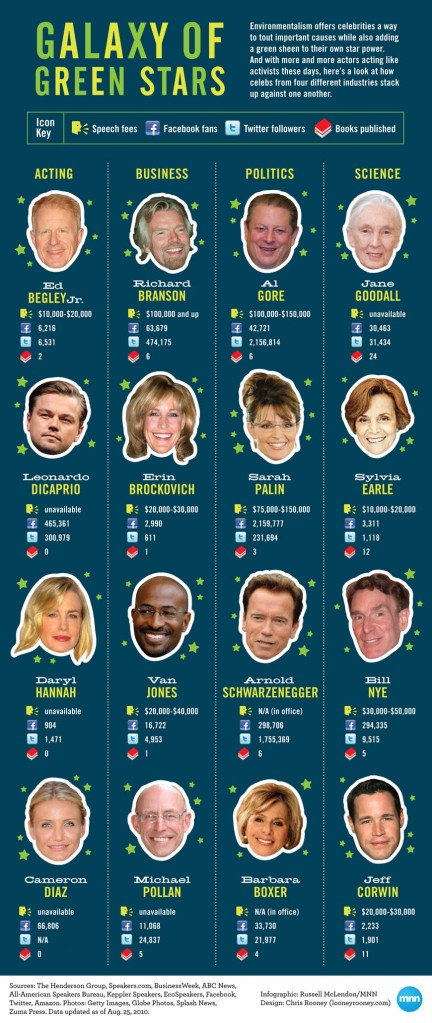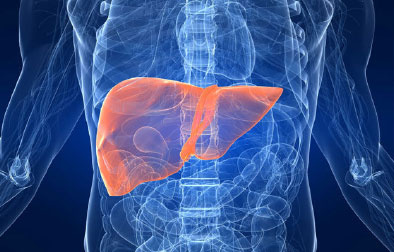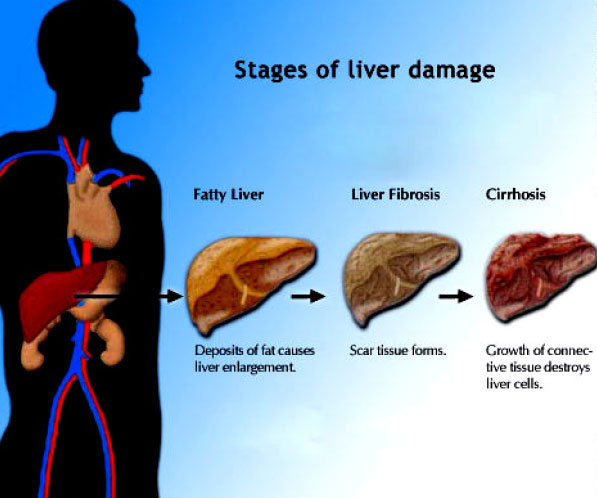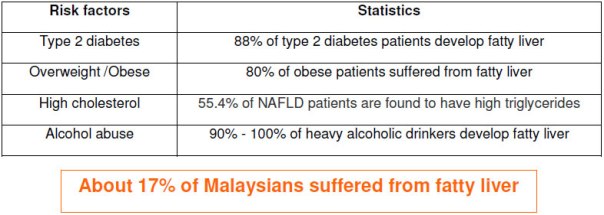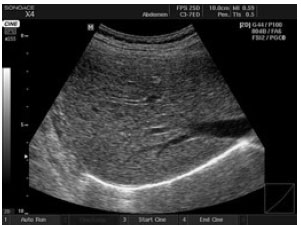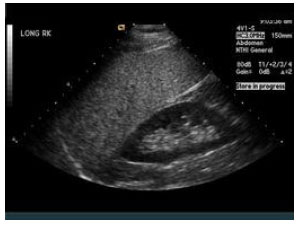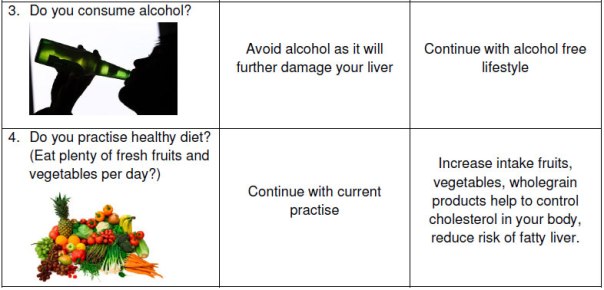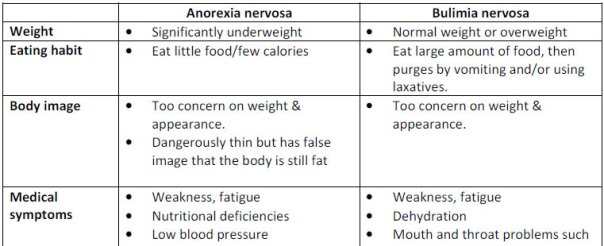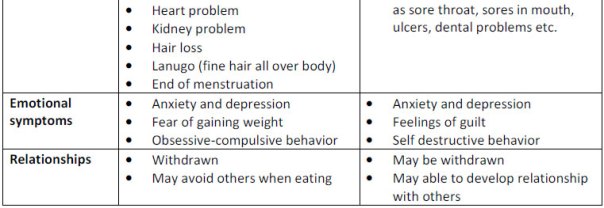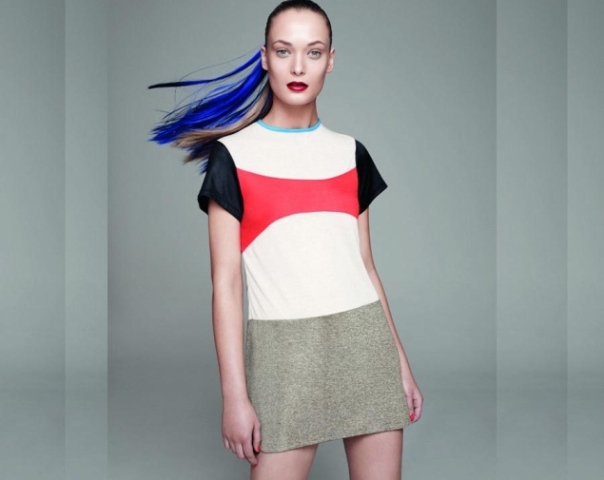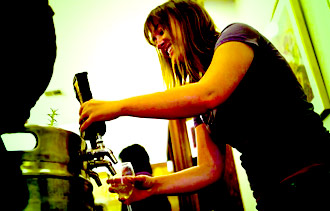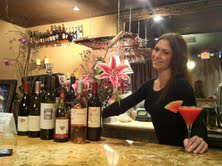Famous ‘Green’ Personalities
Just some Infographic for you guys to digest this lovely green weekend.
Do you think they are ‘worthy’ green stars? Let us know.
Infographic courtesy of www.mnn.com
Non – alcoholic Fatty Liver Disease (NAFLD)
What is liver?
Liver is located at the right upper abdomen. It is the 2nd largest organ in your body and is
shaped like a football that is flat on one side. It is estimated that liver performs over 500
functions in your body. About 60% of the liver is made up of liver cells called hepatocytes
which absorb nutrients, detoxify and remove harmful substances from the blood.
What is fatty liver?
Non-alcoholic fatty liver disease (NAFLD) is the build up of extra fat in liver cells that is not
caused by alcohol. It is normal for the liver to contain some fat. However, when fat exceeds
10% of the liver weight, the fat cells can damage liver cells. Fatty liver is reversible if detected
at early stage, and it will progress to liver fibrosis and liver cirrhosis.
Stage 1 : Fatty liver or steatosis (> 5% – 10% percent of the liver’s weight is fat).
Stage 2 : Liver fibrosis or Non-Alcoholic Steatohepatitis, NASH (fatty deposit build up in your
liver, causes inflammation and scarring.
Stage 3 : Liver cirrhosis (scarring of the liver — hard scar tissue replaces soft healthy tissue).
Symptoms of fatty liver
Fatty liver often has no symptoms, but when symptoms occur they may include:
What causes fatty liver?
How to detect fatty liver?
- Blood tests show high levels of liver enzymes.
AST (aspartate aminotransferase) or SGOT, can also be elevated in heart and muscle diseases and is not liver specific.
ALT (alanine aminotransferase) or SGPT, is more specific for liver damage.
ALP (alkaline phosphatase) is elevated in many types of liver disease, but also in non-liver related diseases.
GGT (gamma glutamyl transpeptidase) is often elevated in those who use alcohol or other liver-toxic substances to excess.
- Ultrasound of liver
Check your liver health
Eating Disorders- Anorexia Nervosa and Bulimia Nervosa
An eating disorder is an illness that causes serious disturbances to your everyday diet, such as eating extremely small amounts of food or severely overeating. Someone with an eating disorder can appear very thin, healthy weighted or above healthy weight. It frequently appears during the teen years or young adulthood but may also develop during childhood or later in life. Eating disorders can become life-threatening if a person does not receive treatment.
Anorexia nervosa is an eating disorder that makes people lose more weight than is considered healthy for their age and height. People with this disorder may have an intense fear of weight gain, even when they are underweight.
Bulimia nervosa is an eating disorder in which a person binges and purges. The person may eat a lot of food at once and then try to get rid of the food by vomiting, using laxatives, or sometimes overexercising.
Anorexia Nervosa vs. Bulimia Nervosa
Prevalence in Malaysia
- In Malaysia, there is no any concrete studies/ systematic research on the prevalence of eating disorders.
- Estimated figure is 1% of the population having anorexia nervosa, 3% having bulimia nervosa.
- For every 10-20 females with eating disorders, there would be one male with similar problem.
- Anorexia nervosa usually occurs in early adolescence, about 14 years old. Bulimia nervosa happens slightly later but still within the young adult population.
Possible Causes and Risk Factors
Being female
Teenage girls and young women are more likely than are teenage boys and young men to have eating disorders.
Age
Eating disorders are more common during the teens and early 20s compared with lesser cases at other life stages.
Family history
Eating disorders more likely to occur in people who have parents or siblings with history of an eating disorder.
Emotional disorders
People with depression, obsessive-compulsive disorder, anxiety disorders, and/or had any transitions that cause emotional distress (joined college, new job or a relationship breakup) may have eating disorders.
Dieting
Eating disorders may occur in people who take up dieting to improve their appearance.
Eating disorders may occur in people whose job/activities favors a slim
body
Work – athletes, actors, television personalities, dancers, models. Sports –ballerinas, gymnasts, runners and wrestlers.
Society
Peer pressure and media influence may fuel the desire to be thin, particularly among young girls. Western cultural environment often cultivates a desire for thinness.
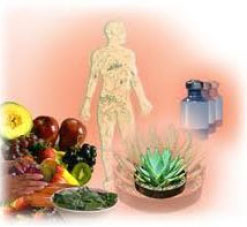 Treatments and Recovery
Treatments and Recovery
If you suspect yourself or someone else having eating disorder(s), get it treated immediately before
it’s too late. You may see both a medical doctor and a mental health doctor for a diagnosis. They may
do various assessments such as physical exams, laboratory tests (blood and urine) and psychological
(mental health) evaluations to pinpoint a diagnosis.
Medical treatment and drugs
- Psychotherapy is an education which helps to develop healthy habits, problem–solving skills, stress handling skills. It also helps to improve relationships and mood. Family-based therapy may also be considered.
- Nutrition educations in which dietitians can help you achieve a healthy weight and instill normal-eating habits.
- Medication which may helps to control urges to binge or purge or to manage excessive preoccupations with food and diet. Antidepressants and anti-anxiety medications may also help with symptoms of depression or anxiety.
Lifestyle and home remedies
- Practicing proper self-care during and after treatment as per doctor’s advice is crucial to maintain overall health.
- Appropriate vitamin and mineral supplements is essential for a healthier body.
Alternative medicine
Several treatments that help to improve mood, lower stress and reduce anxiety include:
- Chamomile tea
- Acupuncture
- Massage
- Yoga
- Biofeedback
Prevention
For yourself
- Be realistic. The ultra thin models or actresses in popular magazines aren’t healthy bodies.
- Surround yourself with positive influences and be a positive influence yourself.
- Don’t visit websites that advocate or glorify eating disorders.
- Communicate with your friends and family.
- Learn about
For your children, relatives and friends
Encourage healthy-eating habits and avoid dieting around your children.
Family dining habits influence the relationships children develop with food. Eating meals together gives an opportunity to teach children about the pitfalls of dieting, and encourage healthy eating.
Keep an eye on computer use.
There are numerous websites that promote anorexia (commonly called “pro-ana” sites) as a lifestyle. Periodically check the computer’s history page to see what sites your child has visited.
Cultivate and reinforce a healthy body image
Talk to children about their self-image and offer reassurance that body shapes can vary. Encourage children or family members to refrain from joking about others body size.
Reach out if you suspect trouble.
If you notice a family member or friend with low self-esteem, severe dieting, frequent overeating, hoarding of food or dissatisfaction with appearance, consider talking to him or her about these issues. Reaching out with compassion may encourage him or her to recover or seek treatment.
Where to go?
- Malaysia Eating Disorders Therapists provide counselling services by psychiatrists, psychologists, nutritionists and therapists to facilitate rehabilitation.
- Malaysian Mental Health Association Support Group for people who have/had an eating disorder and their caregivers. They meet monthly to share stories and support each other.
Beauty goes au naturale
Who doesn’t like the freshness of teal eyes, pink luscious lips, peach cheeks and a glowing complexion?
As the beauty industry takes a step forward, there is an equal number of men and women going back to basics.
Going organic seems to be the new mantra, what with organic soaps, creams, lotions, shampoos, lip balms and other beauty products taking a haute new avatar.
Ahalya Matthan, of Ally Matthan brand of natural fragrance and fragrance-based natural and handmade products for skin, hair, bath and personal care and Areev, a nationally available bath care range explores wellness with a holistic approach.
Natural beauty
Natural skin care is really a way of life. Plant oils, shea and cocoa butters make fantastic moisturisers, aloe and chamomile are soothing and minerals work magic to get rid of makeup lines for sensitive skin.
Look for some easy-to-find organic ingredients like rosemary, almond, wheatgerm, honey and milk in your beauty range.
Chemical free
More and more people are learning about the potential skin and hair problems associated with preservatives and other suspect chemicals in cosmetics.
Chemical-based products can give you instant results, but can damage your sensitive skin and hair in the long run.
It’s a myth that synthetic skin products work marvels as they contain chemicals that are not harmful in tiny dosages, but years of accumulated usage results in damage that you cannot see.
The skin absorbs nutrients and has the ability to heal itself, so it is a logical choice to choose whether you put a chemical or a natural product on your skin.
Go organic
If you are looking to lead a healthy life in the long run, choosing a natural or organic product is imperative.
By choosing an organic or a natural product, you are using ingredients that work with the natural systems of your skin. Here’s a know how on how to go au naturale:
Organic skin care implies that the products are made of ingredients derived directly from plants that have been cultivated without the use any chemical pesticides or fertilisers and contain no synthetic preservatives or additives.
Organic products are certified such that the end consumer can trace the origin of the farm where the ingredients were cultivated.
True organic products are hard to find as the low yield of plants cultivated without fertilizers makes them commercially unviable.
On the other hand a natural skincare product simply means that the ingredients are plant derived, cultivated with or without chemical interference, or they could alternatively mean that the ingredients are molecular clones of plant derivates.
Both products deliver the promise of the best natural ingredients for specific skincare.
Article excerpted from www.deccanchronicle.com
Topshop going green with eco capsule line; Aims to encourage sustainability within the fashion industry
Following hot on the heels of H&M’s sustainable Glamour Conscious Collection, high street retailer Topshop has teamed up with eco fashion brand Reclaim To Wear to create a debut upcycled capsule collection made entirely from discarded materials.
Materials including surplus stock and production off-cuts have gone into the line, which comprises on-trend pieces including ombre bleached denim shorts and color block panel mini and maxi dresses.
On sale from June 8 at the retailer’s London Oxford Circus store and online, the line aims to encourage sustainability within the fashion industry.
Aiming to solve the problem of textile waste, Reclaim To Wear was founded in 1997. The brand’s creative director Orsola de Castro and managing director Filippo Ricci shared their knowledge with Topshop when collaborating on the line.
“This is the first step towards the creation of zero waste design collections. I trust that the Topshop team’s commitment to new sustainable solutions will lead to the reconsidering of consumption versus disposal throughout the whole fashion industry supply chain,” said de Castro.
The new eco friendly Topshop line follows a general shift in the fashion industry towards upcycling and sustainable fashion. On the high street H&M launched its Glamour Conscious Collection back in March, comprising pieces made using sustainable materials including organic cotton, hemp and recycled polyester.
Big name designers have also been getting in on the act, with a host of labels including Valentino and Lanvin signing up to film producer Livia Firth’s Green Carpet Challenge initiative ahead of the awards ceremony season earlier this year.
Highlights on the Oscars red carpet included best actress winner Meryl Streep’s gold draped Lanvin dress made out of eco-certified sourced fabric and Firth’s red Valentino gown made of recycled polyester sourced from plastic bottles.
Article excerpted from www.nydailynews.com
A new eco-conscious expo in South Korea
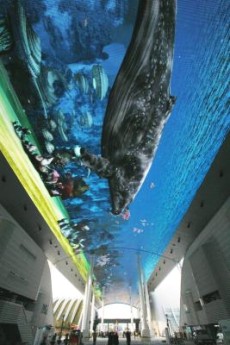
At the Expo Digital Gallery, you can watch the advanced IT and LED lighting art interwoven to create an outdoor marine culture art gallery. That amazing overhead LED screen measures 218m by 30m. — Photos by MAJORIE CHIEW/The Star and courtesy of Expo Yeosu Korea 2012
THE exhibition halls are fully booked and impossible to get into, says our tour guide, Jinny Kim. And it wasn’t even opening day at the International Exposition Yeosu Korea 2012!
Our group, though, has special permission to enter, as we are there to report on this extraordinary expo. Even before we get in, though, we hear details that are jaw-dropping: The expo, which began on Saturday and runs until Aug 12, will draw 10 million visitors, and its expected economic effect will be 12.2 trillion Korean won (RM32.7bil) as well as the creation of 80,000 new jobs, explains Yeseul Oh, a spokesperson for the expo’s organising committee.
To draw all those visitors, the 93-day expo will be jam-packed with over 3,000 cultural programmes, with 40 performances and events daily!
The venue is Yeosu’s 2.71sq km New Port development where the expo site covers an area of 250,000sqm. The result of four years of work and US$10bil (RM31bil) in investment, Expo Yeosu is the country’s second international fair since Expo Taejon (Daejeon) in 1993.
While that event was about development, this year’s theme is “The Living Ocean and Coast” and emphasises the importance of the marine environment. To quote the expo’s website, the event “will provide an opportunity to enhance the international community’s perception of the function and value of the ocean and coast, share knowledge on the proper use of the ocean and coast, and recognise the need for cooperation in the marine sector.”
In keeping with that very green spirit, the entire expo site was constructed using environmentally-friendly methods and recycled materials to produce the least amount of waste possible. All preparations and events are designed to leave a limited carbon footprint.
Basically, the expo forms a model city exhibiting the low-carbon lifestyle of the future. It is an open-air gallery housing artworks of architectural grandeur and providing a glimpse of a high-tech city circa 2050 against the backdrop of the sea.
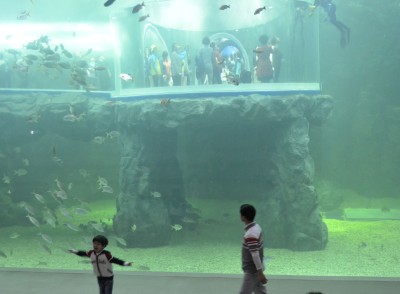
The Aquarium is well worth visiting as it is the largest in Korea and offers an up close look at rare marine species such as beluga whales.
The construction and operation of the expo facilities and exhibitions are based on South Korea’s cutting-edge information technology allowing for novel experiences involving virtual and augmented reality.
The major exhibition facilities are the Theme Pavilion, the Korea Pavilion, and the International Pavilion, which comprise a joint pavilion hosting 56 developing countries and the individual pavilions of 49 countries.
Among the areas our tour takes in on the expo’s second pre-opening day are the Aquarium and Japan Pavilion. (Our guide informs us that the Malaysian Pavilion would be worthy of a visit but that it is, unfortunately, not ready at this time.)
Just getting to the International Pavilions is fascinating because a supersized LED screen with fantastic digital shows stretches over the walkway; the 218m long by 30m wide screen is part of the Expo Digital Gallery, which is a pedestrian mall offering a variety of electronic art.
After that experience, we head to the Japan Pavilion where we are treated to footage of the beautiful seas around that country and receive sobering information about the sea’s connection with forests, cities and the March 2011 tsunami disaster. There is also a screening of an animated story about a Japanese boy, Kai, a tsunami survivor who rides a magical flying bicycle to see residents restoring their hometowns.
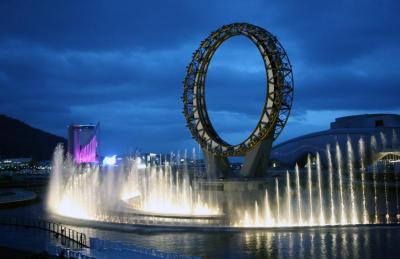
Dazzling: The night-time musical fountain show at the Big-O, one of the iconic structures at the International Exposition Yeosu Korea 2012.
Visitors are also introduced to Japan’s advanced ocean technology that help people enjoy the bounties of the sea.
If you can’t make it to every facility at the expo, do be sure to get to the Aqua Planet Aquarium – it is definitely worth a visit. It is the largest in South Korea – comprising a 6-tonne water tank – and displays 280 species of fish and rare marine species such as beluga whales from Russia. It’s awesome when you walk through a transparent tunnel and find marine life teeming around you – makes you wonder just who is in the tank!
This facility has three zones: The Coastal Life zone allows visitors to see rare ocean animals such as white whales, Baikal seals and sea dragons; the Marine Life zone can be viewed in all directions, the first of its kind in South Korea; the Eco-Terrarium zone recreates the ecological system of the Amazon and houses rare South American freshwater fish such as the pirarucu and piranha.
While we can’t get to it, we hear that the Climate & Environmental Pavilion is a hit with visitors too, as they get to experience the extreme cold of the Arctic ice-edge in the Arctic Glacier Experience section.
A myriad of futuristic robots await visitors at the DSME (Daewoo Shipbuilding and Marine Engineering) Marine Robot Pavilion. Meet Navi, the tallest robot ever introduced in South Korea. An adult comes up just knee-high to the 6.5m tall, 1 tonne machine.
Led by Navi, a fleet of robots present the performance of marine resource exploration and mineral mining in a 6,000m-deep virtual underwater environment.
There is also Ever, a feminine robot that has 30 different facial expressions, and Mero, which dances to famous songs by Korean boy band Super Junior. Also, a seven-colour robot fish and robots from other countries such as the United States, Britain and France, join a total of 73 robots on display.
The Sky Tower, the tallest structure at the expo, is a monumental piece of art, recycled and redesigned from a pair of abandoned 55m-high cement silos. It has a harp-shaped exterior, an embodiment of giant waves, but really, the tower is a fully functioning pipe organ that plays tunes related to the sea!
The Ocean Experience Park is part of the city’s concrete shore-protection project that has been turned into an eco-friendly park. It is a great venue to learn about the significance of coastal ecosystems while lapping up the pristine beauty of the sea.
And at Energy Park, you can have hands-on experience with the latest technologies using renewable energy sources such as wind and tides. This eco-friendly park also offers a place to rest while exploring these green technologies.
Apart from the different pavilions and other facilities, the expo also offers large scale events such as the state-of-the-art Night Multi-Media Show of a dazzling display of laser lights. The Big Ocean Show is a weekly performance that uses the sea, beach and ships to create different performances that reflect the expo’s theme. And the World Ocean Performance features artists on a floating stage, thus using the sea as a platform for cultural activities.
Celebrities gracing the Big-O shows include nine-time Grammy Award winner John Legend and a host of K-pop stars such as the Wondergirls, Dynamic Duo & Simon D, Beast, Jay Park, Apink, BTOB, Busker Busker, Leessang & JeongIn, 2AM, B1A4, 2PM, MissA, Infinite, Shinee, Super Junior, CNBLUE, MBLAQ, Ailee, FTIsland, and ZE:A & c.
And if you are separated from your travel companions amidst the throngs of people and carnival atmosphere at the expo, the Big-O is the place to converge. This 48m-tall round steel structure is the iconic centrepiece of what is truly an amazing expo.
For more information about the International Exposition Yeosu Korea 2012, go to eng.expo2012.kr.
The writer was part of a eight-member delegation comprising representatives of the Malaysian media, Korean Air and Korea Tourism Organisation that toured the expo before it opened. The trip was organised by the Korea Tourism Organisation and supported by Korean Air.
Article excerpted from www.thestar.com.my
